 W
WTodor Aleksandrov Poporushov also transliterated as Todor Alexandrov also spelt Alexandroff was a Bulgarian revolutionary, army officer, politician and teacher, who fought for freedom of Macedonia. He was a member of the Internal Macedonian-Adrianople Revolutionary Organisation (IMARO) and later of the Central Committee of the Internal Macedonian Revolutionary Organisation (IMRO).
 W
WAqil Agha al-Hasi was the strongman of northern Palestine in the mid-19th century, during Ottoman rule. He was originally a commander of Arab irregular soldiers, known as the Hawwara tribe, in the service of the Ottoman governors of Acre. His influence in the Galilee grew as he strengthened his alliances with the powerful Beni Sakhr and Anizzah tribes of Transjordan, and recruited unemployed Bedouin irregulars from Egypt into his own band of irregulars, who thenceforth became known as the Hanadi tribe. He was known by his men and Western travelers to be courageous, cunning and charismatic, all qualities that contributed to his rise as the de facto ruler of Galilee.
 W
WArabo, born Arakel Avedisian, was a famed Armenian fedayi of the late 19th century, one of the first fedayis.
 W
WCostache or Kostake Aristia was a Wallachian-born poet, actor and translator, also noted for his activities as a soldier, schoolteacher, and philanthropist. A member of the Greek colony, his adolescence and early youth coincided with the peak of Hellenization in both Danubian Principalities. He first appeared on stage at Cișmeaua Roșie in Bucharest, and became a protege of Lady Rallou. She sponsored his voyage to France, where Aristia became an imitator of François-Joseph Talma.
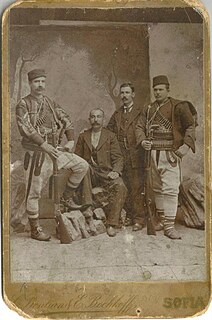 W
WMirche Atsev, or Mirče Acev, nicknamed Orovchanets, was a Bulgarian revolutionary from Ottoman Macedonia, a leader of an Internal Macedonian-Adrianople Revolutionary Organization (IMARO) revolutionary band. In the Republic of Macedonia he is considered Ethnic Macedonian.
 W
WPetar Atsev was a Bulgarian revolutionary, a voyvoda of the Internal Macedonian-Adrianople Revolutionary Organization (IMARO) for the region of Prilep. In North Macedonia he is considered an ethnic Macedonian.
 W
WGeorgi Bogdanov was a Bulgarian anarchist and revolutionary. Bogdanov is best remembered as a member of the Gemidziite group and a participant in the 1903 Thessaloniki terror campaign. He is considered an ethnic Macedonian in North Macedonia.
 W
WHampartsum Boyajian, also known by his noms de guerre Murad and sometimes Medzn Murad, was an Armenian fedayi and a leading political activist of the Hunchak party.
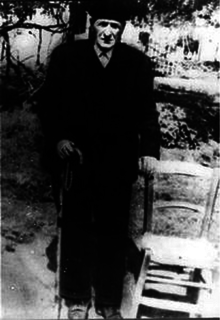 W
WNikolaos Davelis was a significant Greek participant in the Macedonian Struggle.
 W
WDomentius IV was the Catholicos Patriarch of Georgia from 1705 to 1724 and again from 1739 to 1741. He was a member of the royal Mukhrani branch of the Bagrationi dynasty, born as a younger son of Levan of Kartli and his first wife Tuta Gurieli. Domentius was energetically involved in the politics of Kartli and, according to some contemporary accounts, he even had regal ambitions. The split in his patriarchal tenure was due to his opposition to the accession of the Ottoman regime in Kartli and he spent thirteen years in the Ottoman captivity from 1725 to 1737. A man of letters, Domentius compiled a collection of Georgian hagiography. He also sponsored reconstruction and repair of several churches and monasteries in Georgia. His regnal name is sometimes given as Domentius III.
 W
WHrayr Dzhoghk, born, also known as Hrair, Hrayr, Tjokhk, Djohkh, Dzhokhk, was an Armenian military leader and strategist, fedayee, statesman and teacher, part of the Armenian national liberation movement. He was a member of the Armenian Revolutionary Federation.
 W
WGeorgios Filippopoulos or Filippou or Parathyras was a Greek revolutionary of the Greek War of Independence.
 W
WLiverios Gerakaris, more commonly known by the hypocoristic Limberakis, was a Maniot pirate who later became Bey of Mani.
 W
WMelkon Hrand Guirdjian was a renowned Armenian writer, professor, and civic activist.
 W
WAndrea Gritti was the Doge of Venetian Republic from 1523 to 1538, following a distinguished diplomatic and military career.
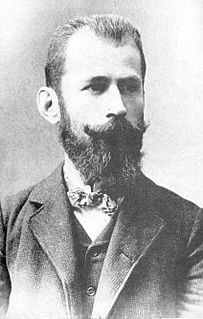 W
WDamyan Yovanov Gruev or Damjan Jovanov Gruev, often known by his short name Dame Gruev, was а Bulgarian teacher, revolutionary and insurgent leader in Ottoman regions of Macedonia and Thrace. He was among the founders of the Internal Macedonian Revolutionary Organization. Despite his Bulgarian self-identification, according to the post-World War II Macedonian historiography, he was an ethnic Macedonian.
 W
WPitu Guli was an Aromanian revolutionary in Ottoman Macedonia, a local leader of what is commonly referred to as the Internal Macedonian Revolutionary Organization (IMRO). Nevertheless, Pitu Guli and his family were Bulgarophiles.
Petros Hatzitasis (1872-1932) was a Greek chieftain from Florina who contributed to the Macedonian Struggle.
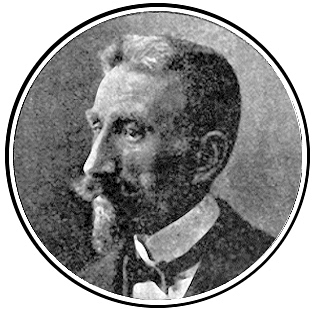 W
WHarutiun Jangülian was an Armenian historian, political activist, and member of the Armenian National Assembly. He was especially known for his involvement in the Kum Kapu demonstration. He spent six years imprisoned in exile. He returned to Constantinople and continued his political activity after his release. Jangülian was arrested on 24 April 1915, at the beginning of the Armenian Genocide, deported, and ultimately executed.
 W
WPantelis Kandilas was a Greek chieftain of the Macedonian Struggle.
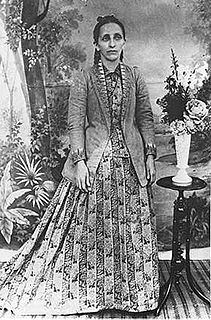 W
WBahíyyih Khánum was the only daughter of Baháʼu'lláh, the founder of the Baháʼí Faith, and Ásíyih Khánum. She was born in 1846 with the given name Fatimih Sultan, and was entitled "Varaqiy-i-'Ulyá" or "Greatest Holy Leaf". Brought up through the trying times her family lived through, in adulthood she served the interests of the religion and was even occasionally trusted with running the affairs of the religion and is seen within the Baháʼí Faith as one of the greatest women to have lived. Bahíyyih was born in Tehran, initially to great privilege. In 1852, when she was aged 6, her father was arrested and imprisoned, the family's home pillaged and Bahíyyih and her family were forced to live in poverty. Later the same year the family were exiled to Baghdad. As a young girl she opted to remain single, and instead served her parents, especially her mother. During the 1860s a succession of exiles followed including Constantinople and Adrianople. By the time she was 21, Bahíyyih had spent all of her adult life a prisoner and arrived at her final destination, the penal-colony of Acre, Palestine.
 W
WStavros Kotsopoulos was a significant Greek chieftain of the Macedonian Struggle.
 W
WStroe Leurdeanu, also known as Stroe (sin) Fiera, Stroie Leurdeanu, Stroe Leordeanu, or Stroe Golescu, was a Wallachian statesman and political intriguer, son of Logothete Fiera Leudeanu. He began his career with the Wallachian military forces, serving as Spatharios and seeing action in the Polish–Ottoman War of 1633. Related by marriage to the Craiovești dynasty, he emerged as one of the country's most important officials under Prince Matei Basarab: as Vistier, he was in charge of the princely treasury, and also became a regent in 1645. Matei also adopted Stroe's son, Istratie Leurdeanu, but in 1651 turned against the family, and found Stroe guilty of embezzlement. He returned to high favor under a new Prince, Constantin Șerban, who made him his Logothete.
 W
WNikolaos Manos was a significant Greek chieftain of the Macedonian Struggle.
 W
WSvetoslav Chanev Merdzanov (1876-1901) was Bulgarian anarchist and revolutionary. He was better known as Slave or Slavi Merdzhanov. Merdzhanov was founder of the group called the Gemidzii, which organized the Thessaloniki bombings of 1903.
 W
WMírzá Mihdí was the youngest child of Baháʼí Faith founder Baháʼu'lláh and his wife Ásíyih Khánum. He was given the title G͟husn-i-Athar.
 W
WCyril Parlichev was a Bulgarian revolutionary and public figure. He was a member of Internal Macedono-Adrianopolean Revolutionary Organization (IMARO) and a popular teacher, journalist, translator and writer.
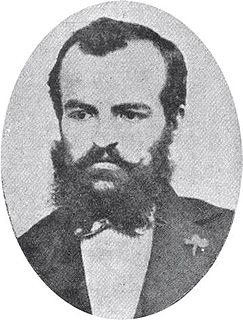 W
WMetody Patchev was a Bulgarian revolutionary, vojvoda of the Internal Macedonian-Adrianople Revolutionary Organization. According to the Macedonian historiography, he was an ethnic Macedonian.
 W
WAnastasios Pichion or Picheon (Πηχεών) was a Greek of Vlach descent, educator and Macedonian fighter.
 W
WSmpad Piurad was an Armenian intellectual, writer and public activist. He was murdered during the Armenian Genocide.
 W
WPetar Pop-Arsov originally spelled in older Bulgarian orthography: Петъръ попъ Арсовъ; was a Bulgarian educator and revolutionary from Macedonia, one of the founders of the Internal Macedonian Adrianople Revolutionary Organization (IMARO), known in its early times as Bulgarian Macedonian-Adrianople Revolutionary Committees (BMARC). Although he was Bulgarian teacher and revolutionary, and thought of his compatriots as Bulgarians, according to the post-WWII Macedonian historiography, he was an ethnic Macedonian.
 W
WLazar Poptraykov was a Bulgarian revolutionary (komitadji). He was also a Bulgarian Exarchate teacher and poet from Ottoman Macedonia. He was one of the leaders of the Internal Macedonian-Adrianople Revolutionary Organization (IMARO) in the region of Kastoria (Kostur) during the Ilinden Uprising. Despite his Bulgarian identification, per post-WWII Macedonian historiography he is considered as an ethnic Macedonian.
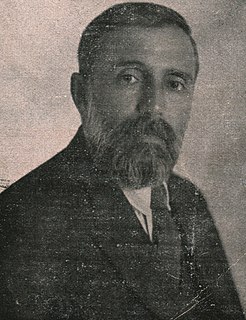 W
WKadri Prishtina (1878–1925), also known as Hoxha Kadri, was an Albanian political figure of the early 1920s.
 W
WDimitrios Μ. Sarros was a Greek scholar, teacher, soldier and writer of the late 19th and 20th centuries.
 W
WSevkaretsi Sako was an Armenian revolutionary and member of the Armenian Revolutionary Federation.
 W
WMar Ignatius Gregory Peter VI Shahbaddin (1641–1702) was the Patriarch of the Syriac Catholic Church from 1678 to 1702. His death in tragic circumstances marked the end of the first attempt of union between the Syriac Church and the Catholic Church.
Pavel Potsev Shatev was a Bulgarian revolutionary and member of the left wing of the Internal Macedonian-Adrianople Revolutionary Organization (IMARO), later becoming a left-wing political activist. Even though he was jailed in SR Macedonia as an enemy of the state and self-declared as a Bulgarian, according to the historiography in North Macedonia, he was an ethnic Macedonian.
 W
WPetar Sokolov was a Bulgarian revolutionary, anarchist, and member of the Internal Macedonian-Adrianople Revolutionary Organization.
 W
WHristo Dimitrov Uzunov was a Bulgarian teacher and revolutionary, head of the Ohrid branch of the Internal Macedonian Revolutionary Organization and its ideological leader in the Ohrid region. Despite his Bulgarian self-identification, according to the post-WWII Macedonian historiography, he was an ethnic Macedonian.
 W
WAthanasios or Thanasoulas Valtinos was a Greek revolutionary of the Greek War of Independence.
 W
WArmenakis Yekarian was an Armenian fedayee. Yekarian was born in Van, Ottoman Empire. He joined the Armenian national liberation movement through the ranks of the Armenakans in 1888. His early education was at Varagavank monastery. In 1896, during the defense of Van, he obtaining weapons from Persia to organize self-defense in the city. He was imprisoned with 40 of his comrades and then released at the end of the conflict. Thereafter, he left the Ottoman Empire as required by the Sultan. He took refuge in Urmia in Persia. After the deposition of the Sultan by the Young Turk Revolution, he returned to Van in 1908. He joined the Van resistance in 1915. After the Armenian victory, they set up an Armenian provisional government, with Aram Manukian at its head. Armenak Yekarian became the police chief. Aram Manoukian, Armenak Yekarian and others tried to give a national-civil character to the exclusively militarized administration. In 1922, he emigrated with his family to Cairo, Egypt, where he died in 1926. His family moved to Soviet Armenia in 1947.